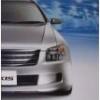Announcements
-
Similar Content
-
Latest Posts
-
By DraftySquash · Posted
Great to know! The guys from The Skyline Shed are going to sort it out and send what I ordered anyway. Turns out their supplier sent them the wrong stock. But it's good to know I "can" put this in if needed -
You do not need an LSD oil in any stock (non-GTR) diff, even if it is an "LSD". This because none of the (non-GTR) LSDs are clutch/friction type LSDs. Either viscous or helical - neither of which require an LSD oil.
-
By DraftySquash · Posted
Hi everyone, I bought the Redline diff oil and the seller has sent me Redline 75W90NS even though that’s not what’s pictured. I’ve already booked a hoist to go and change my diff tomorrow but I’m not sure if the NS is ok for the rear diff in a R34 GTT I think the NS does not have any slip modifiers so would that be an issue? thanks in advance -
Not easy to find pics from 15 years ago, but here is a partial one. Keep in mind that it curved immediately from the airbox, then kept a straight line for the MAF to read correctly, followed by a 45 degree bend straight down to the turbo. This connection was the most difficult as it had to twist as well as bend to meet the almost vertical straight section of the intake.
-
Yes, well, wrt a wheel alignment, there are two types. Either: You have very little added adjustables, in which case the alignment can be done by anyone in any tyre shop or equivalent, and will only take 30 minutes, and so there is no reason to even consider leaving the car there. OR: The alignment is a major exercise because you have adjustables everywhere and so you will need to be taking it to a shop that is skilled and experienced at setting up race cars and the like, and you won't need to worry about leaving the car there.
-



Recommended Posts
Create an account or sign in to comment
You need to be a member in order to leave a comment
Create an account
Sign up for a new account in our community. It's easy!
Register a new accountSign in
Already have an account? Sign in here.
Sign In Now